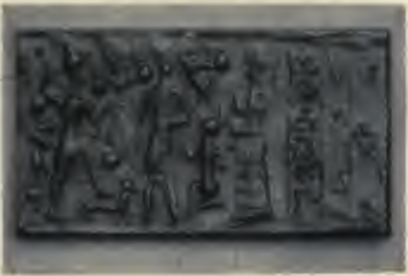The Avarice of Ishtar
“Away from Accadian influences, in the Phoenician lands of the west, the character, like the name, of the goddess was more closely accommodated to Semitic ideas. Istar had become Ashtoreth, and Ashtoreth had put on the colourless character of the Semitic goddess.
Hence it was that, just as Baal became the common designation of the male deity, Ashtoreth was the common designation of the female. By the side of the Baalim stood the Ashtaroth–those goddesses whose sole right to exist was the necessity of providing the male divinity with a consort.
Ashêrah, the southern Canaanitish goddess of fertility, alone retained some of the independence of the Babylonian Istar.
In the second place, there is a very important difference between the Istar of Babylonia and the Ashtoreth of Phoenicia. Ashtoreth was the goddess of the moon; Istar was not. It was in the west alone that Astartê was
“Queen of heaven with crescent horns;
To whose bright image nightly by the moon
Sidonian virgins paid their vows and songs.”
It was in the west alone that the shrine was erected to Ashtoreth Karnaim, “Ashtoreth of the double horn;” and Greek legend described the wandering Astartê, the name of Eurôpa, crossing the celestial sea on the bull that Anu had created for her so long before to punish the disdainful Gisdhubar.
In Babylonia and Assyria, however, Istar and the moon were separate one from another. The moon was conceived of as a god, not as a goddess, in conformity with pre-Semitic ideas; and the Moon-god Sin was never confounded with the goddess Istar.

I am unsure of the provenance of this drawing of a seal impression.
The goddess Istar appears at far left, the vault of the heavens at her back, identified by her idiosyncratic eight-pointed star atop her head.
The Moon God Sin is depicted at center, denoted by his inverted crescent moon.
It must have been the same wherever the worship of Sin extended, whether in Harran in the north or in Yemen and the Sinaitic desert in the south. But the worship never made its way to Canaan. Sin failed to establish himself there, and the moon accordingly remained the pale mirror and double of the mightier Baal.
The Semites of Phoenicia were too distant from the cultured kingdoms of the Euphrates to allow their religious instincts to be overridden and transformed. The name and cult of were indeed introduced among them, but a new interpretation was given to both. Istar sank to the level and took the place of the older goddesses of the Canaanitish faith.
Perhaps you will ask me what is the meaning of the name of Istar? This, however, is a question which I cannot answer. The Babylonians of the historical age do not seem to have known what was its origin, and it is therefore quite useless for us to speculate on the subject.

Iraq
Akkadian Period
Reign of Naramsin or Sharkalishari, ca. 2254-2193 B.C.
Black stone
Purchased in New York, 1947
Oriental Institute Museum A27903
This cylinder seal was dedicated to a little-known goddess, Ninishkun, who is shown interceding on the owner’s behalf with the great goddess Ishtar.
Ishtar places her right foot upon a roaring lion, which she restrains with a leash. The scimitar in her left hand and the weapons sprouting from her winged shoulders signify her war-like character.
https://oi.uchicago.edu/collections/highlights/highlights-collection-mesopotamia
Its true etymology was buried in the night of antiquity. But its earliest application appears to have been to the evening star. This is the oldest signification that we can assign to the word, which by the way, it may be noticed, does not occur in any of the Accadian texts that we possess.
The legend of the assault of the seven wicked spirits upon the moon tells us pretty clearly who the goddess Istar was primarily supposed to be. Mul-lil, it is said, “had appointed Sin, Samas and Istar, to rule the vault of heaven,” and,
“…along with Anu, had given them to share the lordship of the hosts of heaven.
To the three of them, those gods his children, he had entrusted the night and the day; that they cease not their work he urged them.
Then those seven, the wicked gods, darted upon the vault of heaven; before Sin, the god of light, they came in fierce attack; Samas the hero and Rimmon the warrior turned and fled; Istar set up a glittering throne by the side of Anu the king, and plotted for the sovereignty of heaven.”
Thus once more the mythologist gives the goddess an unfavorable character, though it is easy to see what the story means. When the moon is eclipsed, the evening star has no longer any rival in the sky; it shines with increased brilliancy, and seems to meditate ruling the night alone, in company only with the heaven itself.”
A.H. Sayce, Lectures on the Origin and Growth of Religion as Illustrated by the Religion of the Ancient Babylonians, 5th ed., London, 1898, pp. 255-8.




